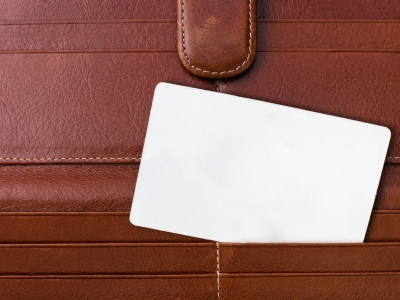Business cards need to pack a powerful punch, which is not easy considering the space you are working with. Conveying just the right image and getting across just the right message can seem like a tricky prospect. Fortunately, the purpose of the card is not to tell the complete story of your business—it is to convey a professional image and give an introduction. If you do not have the funds to hire someone to design your card for you, don’t despair. By following a few key suggestions, you can come up with something good on your own.
Use Common Sense
This one may seem obvious, but in the enthusiasm to design something unique and stand out, it can be tempting to go a bit too far outside the lines. Different colors, fonts and the like convey different images and you always want a design that is in line with the image you are trying to portray. If you provide any type of financial services, for example, you want your card to say you are professional and reliable. This means that funky, colorful design that may look great, is not the way to go.
Basic Elements
No matter what type of business you have, a solid business card will contain several core characteristics. First, your logo should be the largest element of the card. Keep it simple—it can be tempting to try and cram as much information as possible onto the card, but it will just create an unattractive, cluttered design. Choose an easy-to-read font and stick to one or two colors. Make sure you have all the essential information such as your name, title, address, phone number, email and website address.
Give Some More Information on the Company
Just the name of your company is not enough. It is important that the card provides information on exactly what it is you do. In the spirit of keeping it simple, stick with a sentence or two. Or a short list of the goods and services you provide.
Check Out Other Business Cards
Lay out all the business cards you have collected; pick up as many more as you can. Take a good look at them. This will give you sources of inspiration. It will help you clarify your own vision. You can see what you like and don’t like about certain designs. The more cards you look at, the better idea you will formulate of what you want your card to look like.
Getting Creative
Depending on your business, you may have some extra room for creativity. While most people would advise against cards that are anything but the standard shape and size, a non-traditional shape may work to your advantage sometimes. For example, if you run a day care center, a card it the shape of some sort of toy would really make you stand out; if you are a party-planner, a cake-shaped card is really memorable. Textured paper can enhance the attractiveness of a card as can colored paper. If you opt for the latter, opt for lighter shades that make it easy to read the text. You can further enhance visual appeal by getting creative with type. There is thermography, which creates shiny, raised text. Embossing and foil stamping also give your card some pop.
You might also consider doing things like making business card magnets or other items that may be useful to your target market.
Use Photos or Pictures
A business card that is pure text can seem a bit boring, even with jazzy lettering and textured paper. People are visual and pictures are good. Either include a photo of yourself or an image that represents your business.
Kelli Cooper is a freelance writer who blogs about all things business; she recommends visiting www.MaverickLabel.com for more information on their products.
Photo Credit





